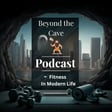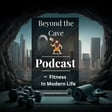
Episode 8 Breaking Down Muscle Imbalance from Sitting Beyond
This is a BIG one, folks. Sitting for hours on end can wreak havoc on your body. If you’ve been dealing with nagging lower back pain, tight hips that make standing up feel like a chore, rounded shoulders that affect your posture, or even just an overall sense of stiffness and discomfort after a long workday, then this episode is for you. And trust me, you’re not alone in this! So many of us feel like we’re stuck in this cycle of bad posture and persistent aches just because we’re tethered to our laptops. But here’s the thing—it doesn’t have to be this way.
Working from your desk (or couch) doesn’t mean you have to accept poor posture or live with daily discomfort. In this episode, I’ll walk you through what really causes these imbalances and, more importantly, how to fix them. We’ll talk about a few simple but highly effective changes you can make to your routine, as well as specific exercises designed to counteract the effects of sitting for long periods. By the end of today’s episode, you’ll have a solid plan to address these issues and keep your body feeling its best.
Hosted on Acast. See acast.com/privacy for more information.

